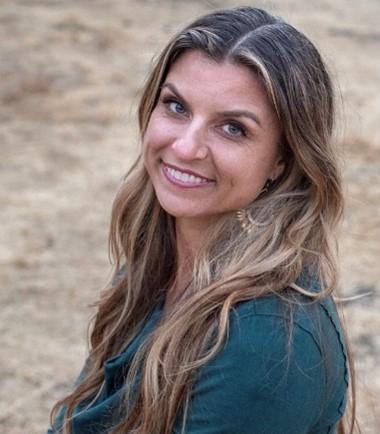FOCUS
Strengths-based coaching supports teachers during COVID
By Karye Wells and Elizabeth Foster
Categories: CoachingApril 2022
Two years after the onset of the pandemic, COVID-19 continues to take a toll on educators’ morale and well-being. Educators’ needs for sick and bereavement leaves have increased, staffing and substitute shortages are worsening, and the occasional requests to cover another teacher’s class or bus duty have become regular — and exhausting — occurrences.
At the same time, the need to strengthen relationships between educators and students is growing. Isolation, anxiety, and dysregulation leave students vulnerable and educators stretched. The social and emotional needs of students and adults have become increasingly widespread and complex, leaving teachers overwhelmed and in need of immediate support.
Coaching, especially a positive and personalized program of coaching, is a way to provide that support. This article showcases how one evidence-based model of coaching can help educators respond to the increased demands and stresses and associated changes in schools, relationships, and classroom dynamics.
The MyTeachingPartner-Secondary (MTP-S) program for middle and high school teachers is based on decades of research about effective coaching strategies, and it is the focus of a federal Education Innovation and Research grant from the U.S. Department of Education because of studies showing positive effects on teacher and student outcomes. It is also recognized by the Collaborative for Academic, Social, and Emotional Learning (CASEL) as an effective social and emotional learning (SEL) program.
A strengths-based coaching program for middle & high school teachers is helping educators respond to the demands & stresses of the pandemic. @AIRInforms @Teachstone Click To TweetMTP-S has features that make it especially relevant in the context of COVID-19. It is flexible; focused on relationships, which have been harder to build during the pandemic; and strengths-based, at a time when exhausted teachers are in need of positive reinforcement. Working with a coach, teachers watch multiple video clips of themselves in their classrooms demonstrating effective teaching practices, and those practices become the basis for reflection and dialogue with their coach.
In addition, it won’t overwhelm teachers with more work. Every two weeks, the teacher and coach repeat the same structured coaching cycle, requiring no additional work for teachers other than writing and conferencing for about 45 minutes. As a result, MTP-S has the potential to boost teachers’ morale without making them feel like they have yet another thing to do.
We spoke with veteran district coaches who use this program to talk about their experience using MTP-S with teachers before and during the pandemic. Meg Ryan, a coach in Louisa County, Virginia, and Becky Odajima, a coach in Midway, Texas, are enrolled in a three-year research project to study student outcomes as a result of being in classrooms with teachers who are receiving MTP-S coaching.
We also talked with coaching experts Anna Savitsky and Destiny Woodbury, who train, support, and coach coaches on using the MTP-S model. These experts shared their insights.
How is MTP coaching different than other models you have experienced?
Meg Ryan: It’s very different for me because my other role for the county is working with all our new teachers. It is about survival mode more with the new teachers, so I like that MTP is strengths-based and guided by the teachers. They get to pick and choose what they want to look at. For me, those are very different ways to coach. [MTP] is more proactive versus reactive.
Becky Odajima: With the timeline [of coaching cycles] that’s put in place with this system, our teachers like the structure and the formalities of these pieces because they know what’s coming next. Right now, they are embracing that.
The other thing that is different about this model compared to others is the focus on teacher strengths and the use of a framework focused on student engagement. Not very often does coaching and the emphasis on the depth of engagement work in the way this framework does. That is certainly the challenge right now: How do you engage kids who are apathetic about being here, tired, don’t have the capacity to stay engaged in a certain moment, or are out of routine or practice? The stamina to stay engaged is not there, so engagement is huge to get kids back to working.
Anna Savitsky: Strengths-based is so critical. I honestly can’t imagine what it would be like right now to be doing some of the other types of coaching that I did [before] that were deficit-based.
Are the conversations with teachers different now than they were pre-COVID-19? Are there different challenges?
Odajima: The group of teachers I work with is smaller now because of the attrition rate. Some have moved out of the district, they are out on leave, or they did not want to take on another thing. What they seem to be reaching out for now is a restart. They are looking to get back to work like they did in prior years before all the layers of things have taken their energy.
Ryan: One thing I’ve noticed is the relationship piece. With masks, there’s an inability to have effective group work. Kids aren’t talking as much, and the peer dialogue has really decreased. I know a lot of teachers who are normally great relationship builders, but the pandemic has made it much more challenging for them. Even that physical touch or a hug or a high-five that the kids want is missing, and I’m noticing big differences in that building relationship piece — teacher to student and also among the students themselves — so group work is a lot more challenging.
Are the conversations with coaches then also different?
Destiny Woodbury: What I do in my conversations with coaches is really take time in the beginning to talk about self-care. Every coaching conversation I have, I ask them, “How are you taking care of yourself?” and I create space for them to share about a challenge from the week or a joy because they are definitely going through a lot.
I use the first step of the coaching conversation to build relationship and rapport with the teacher. We care about each other. We are going to get to the work, but we are checking in on the personal first before the professional. The first step is so crucial. It has always been crucial, but it is more so now.
Savitsky: Coaches are also feeling stretched and stressed and in need of support. One of the biggest challenges this past year and past semester is staffing issues that are affecting coaches’ capacity to coach. The time they would have been coaching they now are filling in jobs because people are not there — whether people have left or people have to quarantine.
I’ve had lower engagement this semester than ever before. I’ve never had coaches [miss a scheduled session], and I am having that happen now. There was much more consistent attendance at the coaches’ training last year at this time. Due to staffing issues and everything else, there is not enough protection for coaches to engage fully. Sometimes coaches leave and then text me later to say, “Sorry, I got called to cover a classroom.”
Woodbury: There has been a lot of rescheduling of meetings by coaches. Coaches will tell me, “I have to go cover a class because this teacher is now out” or “we are missing 10 teachers on campus.” And there is more rescheduling with the coach and the teacher because coaches don’t want to take up a teacher’s planning period. So we have been modifying the cycles to make them faster.
How is MTP coaching supportive, especially post-COVID-19 closings? Can you give an example?
Ryan: Focusing on teacher strengths is an important piece. With COVID, the [district] administration has been focused on mitigation strategies, and they’re not as focused on the instruction piece. And when teachers are having these great lessons, it’s really uplifting for them to have someone tell them that and to get positive feedback.
I’m not here to make sure their kids all have their mask over their nose and that they’re sitting three feet apart. I’m here to show you what good teaching is happening in your classroom and tell them, “Look how awesome you are!” and “You can do it!” and boost morale. Watching those clips of themselves in good, effective teaching moments is especially uplifting for them right now.
As for the relationship piece, I’m their favorite person they want to see, and they can’t wait for our conference. It’s that human connection. Being able to sit down and have a conversation that is not about COVID but on the fundamentals amidst everything else going on, they can see that effective instruction happening in their classroom.
Odajima: There is a really nice balance where teachers choose what to focus on for a cycle. It’s like when you attend a conference, you don’t usually hear anything brand new, but you’re reminded of things that you knew were good practice and those engaging instructional practices. Teachers have choice within the coaching cycle to decide what they’re going to work on and then they are reminded of what they are doing well, what it’s called, and why we do it. The program itself is a nice balance of providing all the resources, but then giving you choice within that context.
Can you give an example of a particular practice that you’ve worked on with a teacher and the improvement you’ve witnessed? Was there an impact on student engagement?
Ryan: With my earlier cohort, I had a teacher who was really struck by the Regard for Adolescent Perspectives dimension [when a teacher provides autonomy and leadership opportunities for students, supports their ideas and opinions, and provides content that is useful and relevant to adolescents].
By giving the kids more choice, giving them a little bit of flexibility, and letting go a little bit, it really improved the relationships that she had with her students. The kids felt like they had more ownership of the class as the year went on because the teacher was inviting them in on some of the decisions, discussions, leadership, and direction.
This opened up the learning, and their engagement was much more effective. Then the other dimensions seemed to follow effortlessly from there. There was more peer dialogue, more instructional dialogue, more group work.
Odajima: For me, we were working on the cycle with a focus on Depth of Understanding [when teachers help students understand key ideas in a lesson by integrating skills, concepts, facts, and principles]. The teacher was allowing the back and forth [feedback loops] in dialogue happen where she continues to question students until they can fully get to a place of understanding. The teacher saw herself in the videos and noticed that she only asked safe questions because she wanted that control.
We are talking about this in subsequent cycles and revisiting the concept of letting go and guiding. It has been neat to see this growth. When we let students have more dialogue, they are learning and remembering more, and we are seeing this engagement in her classroom.
I feel like my job as a coach is simply to hold up a mirror and let her see and discover what she is doing in her own teaching. In the video clips where the teacher watches her own practice and has the space to talk about what she wants to improve on, that is where the money is — allowing them to look and reflect on their own accord.
Woodbury: When coaches talk to me about their conversations with teachers, they tell me how excited the teachers were to hear that they were doing something well — they don’t hear a lot of positive things right now, so the strengths-based coaching is so important. It helps with morale and self-care. When I hear that I am doing something really well and I’m getting clear on what it is that I am doing and the impact that it is having on kids, it makes me feel really good inside.
Odajima: I want to also add that the time is now for MTP. Teacher professional learning is needed because of people quickly coming into the profession with varying backgrounds, and teachers may not be as highly qualified as years past. It is a very timely period for this type of professional development with coaching that focuses on student engagement strategies, structured cycles, tools, and resources to be infused in the school systems.
Benefits of MTP-S
Key themes that came up in the interviews were that MTP-S helps teachers feel supported and motivated and that the consistent cycle is a welcomed structure during a time of uncertainty. The teachers are being heard and applauded for their efforts when most communication from supervisors has been in the form of directives that can make teachers fearful and stressed.
Teachers are learning how to expand the room for student voice and autonomy, which in turn creates a safe climate of student inhibition and productivity. The interviews suggest that MTP-S is helping teachers through its structure, focus on student engagement, and strengths-based approach.
MTP-S coach specialists also support newer coaches who are feeling pandemic overwhelm by providing personal check-ins, group coaching support calls, flexibility in cycle timelines, and plans for successfully meeting goals.
One of the key benefits of the MTP-S approach is the ability to be responsive to teachers’ varied and shifting needs. As teachers adapt to a changing world, MTP-S coaches are there to listen to their needs, capitalize on their strengths, and keep teaching and learning moving forward.
MTP-S TRAINING AVAILABLE
The MTP-S coach training program, which is free to high-needs districts, is available for the 2022-23 school year. There will be no data collection, and coaches may coach teachers in any subject area in grades 6-12. American Institutes for Research is leading the federally funded program. Contact AIR for more information at kawells@air.org or secondarycoachingproject@ air.org.
RESOURCES
For more information about the MTP-S coaching program:
Foster, E. (2021, January). Seeing teaching through a different lens. Learning Forward. learningforward.org/report/myteachingpartner-secondary-coaching-model/. This paper highlights three strengths of MTP coaching: the use of short video clips so teachers can observe and analyze their own instruction; the intentional focus on teachers’ successes in the classroom as a basis for coaching that is strengths-based; and the systematic attention to how classroom interactions can be used to improve student engagement and learning.
Flowers, J.A. (2019, December). Accentuate the positive: Video can motivate teachers to improve their skills. The Learning Professional, 40(6), 36-39. learningforward.org/wp-content/uploads/2019/12/accentuate-the-positive.pdf. An experienced coach’s firsthand perspective on the power of the MTP coaching cycle.
Foster, E. (2019, December). A window into teaching: With evidence-based coaching, teachers observe and reflect on student interactions. The Learning Professional, 40(6), 33-35, 40. learningforward.org/wp-content/uploads/2019/11/a-window-into-teaching.pdf. Excerpts from an interview with Robert Pianta, who developed the evidence-based MyTeachingPartner 1:1 Video Coaching program (MTP).

Karye Wells (kawells@air. org) is research associate with American Institutes for Research (AIR).

Elizabeth Foster is the senior vice president of research and strategy at Learning Forward. She leads the organization’s research efforts for partnerships, programs, and fundraising. Elizabeth co-wrote the Standards for Professional Learning (2022) with Tracy Crow and now facilitates learning sessions about the standards and develops resources that support their use and implementation.
Categories: Coaching
Recent Issues
TAKING THE NEXT STEP
December 2023
Professional learning can open up new roles and challenges and help...
REACHING ALL LEARNERS
October 2023
Both special education and general education teachers need support to help...
THE TIME DILEMMA
August 2023
Prioritizing professional learning time is an investment in educators and...
ACCELERATING LEARNING
June 2023
Acceleration aims to ensure all students overcome learning gaps to do...











